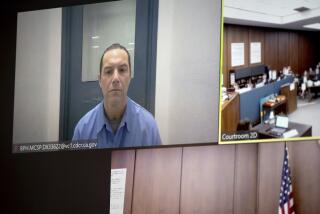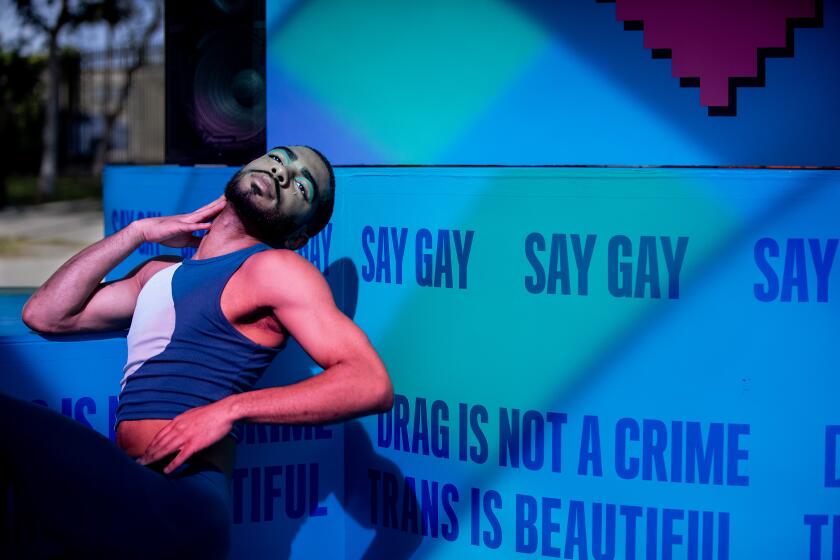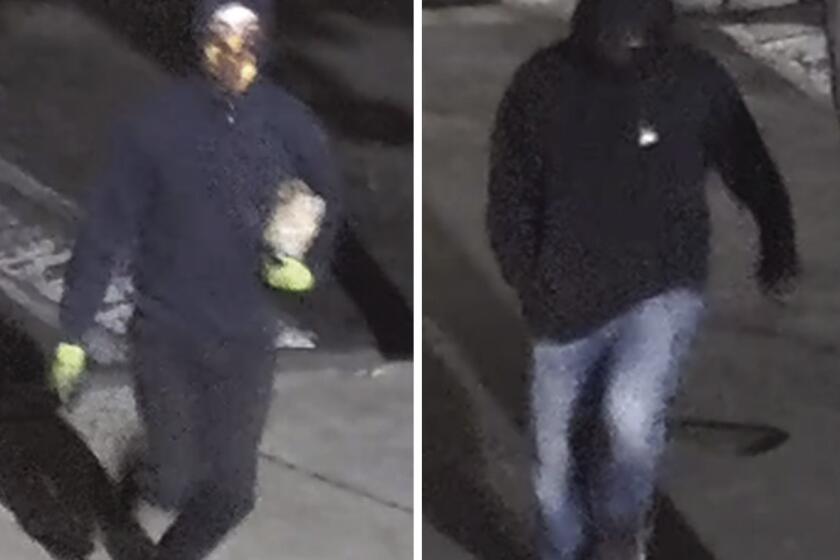Nothing Can Take Place of Live Trial Coverage
Howard Rosenberg is quite right when he cites the propensity of TV newscasts toward “exaggerating, hyperventilating and whipping up emotions,” a tendency that is of special concern as we await the start of the federal civil rights trial of the officers in the Rodney G. King case (“TV News Feeds Fear of Unrest,” Calendar, Feb. 8).
Rosenberg might have gone a step further and pointed out that there will be one thing missing in this second trial: No cameras will be allowed in the courtroom of U.S. District Judge John G. Davies.
Unlike last year’s state court trial held in Simi Valley, where one Los Angeles commercial television station (Channel 11) actually carried the entire proceedings live, cameras will not even be permitted in the hallways outside the federal courtroom. The steps of the federal courthouse will be the closest the electronic media will be permitted to place their equipment.
For those who blame television for most of the ills of our society, including the post-verdict riots in the streets of Los Angeles, the absence of cameras from the second King trial will be greeted with a sigh of relief. One would assume that the notion here is that what is out of sight cannot possibly inflame the passions of the populace.
In truth, the proponents of this simple theory are wrong. Distrust of the judicial system is rampant in the minority community as it is, and keeping the cameras out of Judge Davies’ courtroom will only serve to increase that distrust.
For others, such as myself, the lack of extensive TV coverage of this case is hardly a cause for celebration.
While there is nothing that can take the place of cameras in the federal courtroom, there are several steps that station managers and news directors can take to ensure that local TV coverage does not serve to fuel subsequent civil unrest.
First, daily coverage of the trial should not focus solely on the most dramatic and compelling testimony, presented later in short segments on the station’s evening newscasts. The emphasis must be on fully produced pieces that are comprehensive and detailed, perhaps going as long as three to five minutes. In that way, the viewing audience will get a complete summary of the day’s events in court. In other words, decisions made in the editing booth will be crucial to the success of the electronic media’s trial coverage of the King case.
Second, on-the-scene live remote broadcasts on the courthouse steps should be the exception when the circumstances warrant it and not the rule. In that way, off-the-cuff casual or inflammatory remarks can be kept to a minimum. In short, ratings must take a back seat to journalistic responsibility.
Third, care should be taken in choosing the reporters who cover the trial. It is important that they all have the experience to pick up what might seem mundane to the average viewer, such as conflicts in the testimony of one side’s witnesses.
Finally, news directors should consider using expert legal commentators, perhaps in-studio, to supplement the reporter’s daily stories.
Still, even with these precautions, nothing will take the place of live TV coverage. There are now 44 states that permit camera coverage of their judicial proceedings. However, federal judges have been slower than their counterparts in the state courts in allowing television coverage of trials.
While a few states were experimenting with the use of cameras in the courts as early as the late 1970s, then-Chief Justice Warren Burger had a penchant for refusing to allow television cameras to record his public speeches. It was only recently that a pilot project to televise cases started in six federal district courts around the country, but that experiment applies to civil cases only.
In response to those who would argue that the presence of cameras in the Simi Valley trial served as a lightning rod that contributed to the explosion last April on L.A.’s streets, I would only point out what must seem obvious to the rest of us: It was the “not guilty” verdicts--not the TV coverage of the trial--that spawned the worst civil disturbance in this nation’s history.
More to Read
More to Read
More to Read
Start your day right
Sign up for Essential California for news, features and recommendations from the L.A. Times and beyond in your inbox six days a week.
You may occasionally receive promotional content from the Los Angeles Times.






